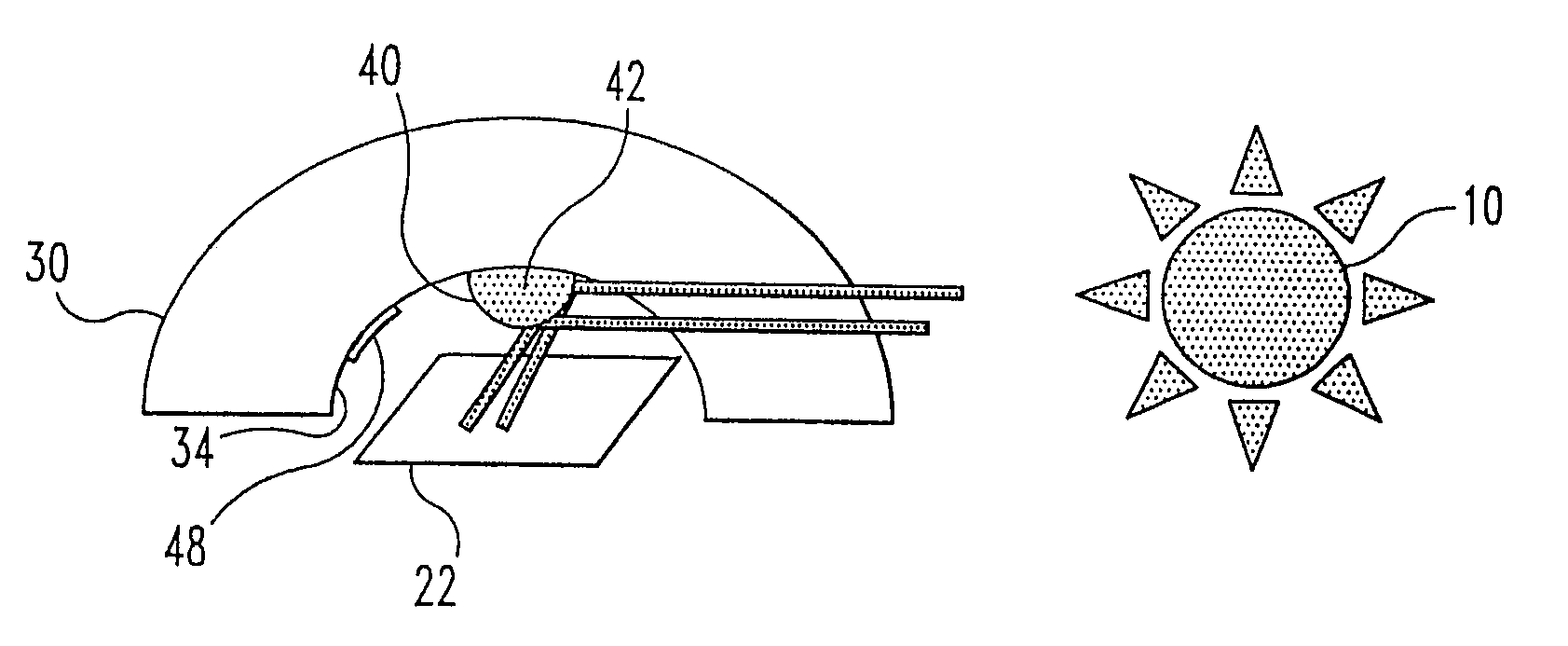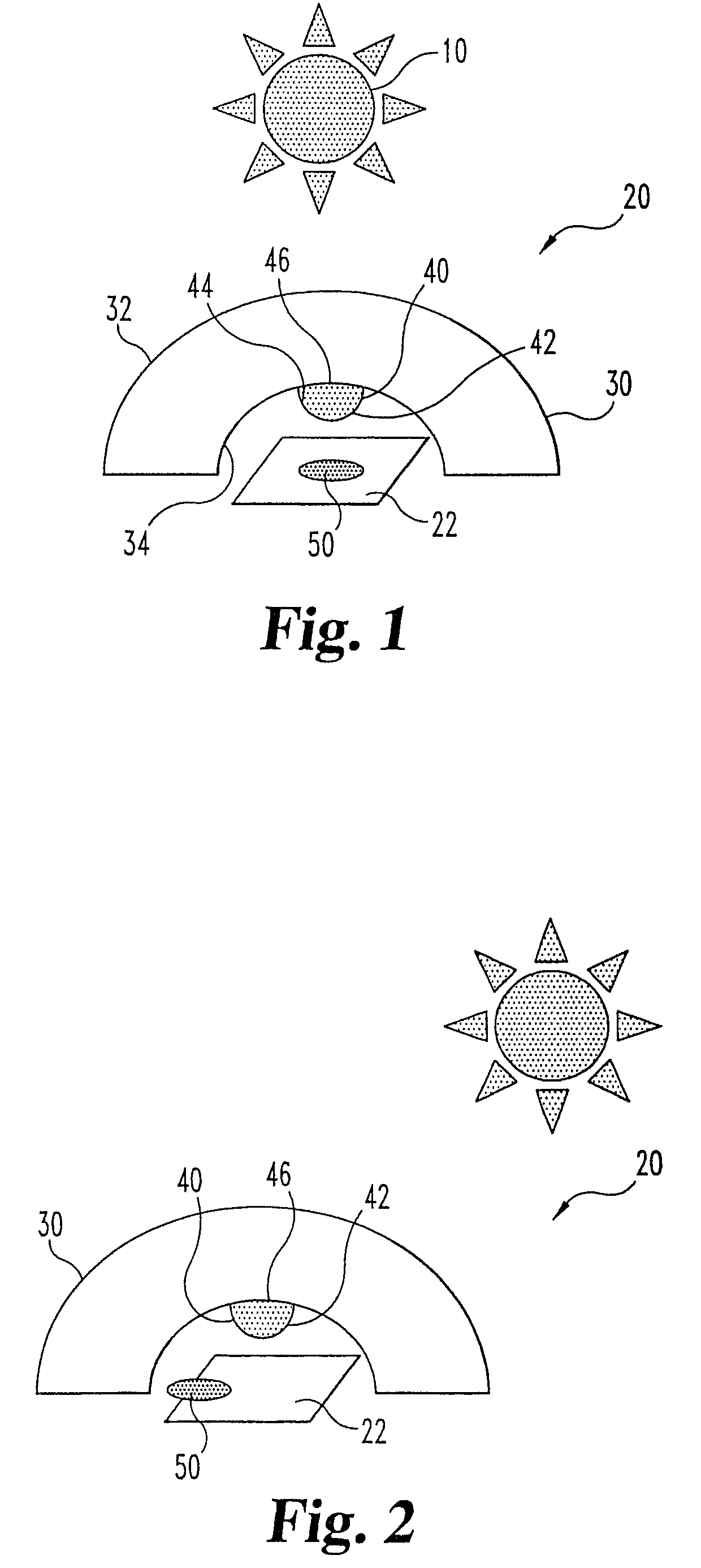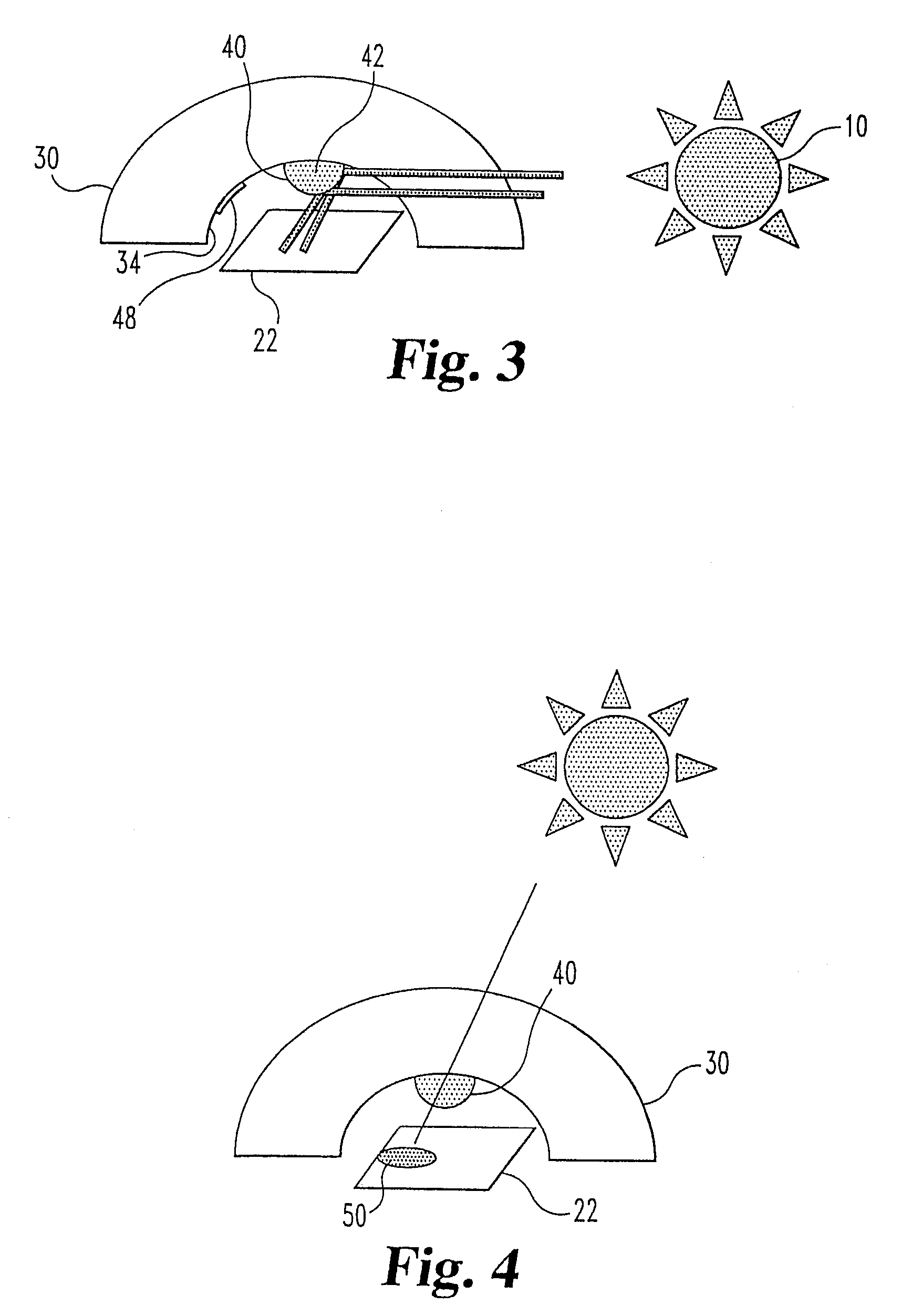Solar sensor including reflective element to transform the angular response
a solar sensor and reflective element technology, applied in the field of solar sensors, can solve the problems of significant reduction of overall signal current, drawback of cosine response in some solar sensors,
- Summary
- Abstract
- Description
- Claims
- Application Information
AI Technical Summary
Benefits of technology
Problems solved by technology
Method used
Image
Examples
Embodiment Construction
[0020]While the present invention may be embodied in many different forms for the purpose of promoting an understanding of the principles of the invention, reference will now be made to the embodiments illustrated in the drawings and specific language will be used to describe the same. It will nevertheless be understood that no limitation of the scope of the invention is thereby intended. Any alterations and further modifications in the described embodiments, and any further applications of the principles of the invention as described herein are contemplated as would normally occur to one skilled in the art to which the invention relates.
[0021]This application incorporates by reference the following U.S. patent applications: Ser. No. 220,021, filed Jul. 15, 1988, which issued as U.S. Pat. No. 4,933,550; Ser. No. 08 / 653,818, filed May 28, 1996, which issued as U.S. Pat. No. 5,670,774; Ser. No. 09 / 188,824, filed Nov. 9, 1998, which issued as U.S. Pat. No. 6,084,228; Ser. No. 09 / 554,29...
PUM
 Login to View More
Login to View More Abstract
Description
Claims
Application Information
 Login to View More
Login to View More - R&D
- Intellectual Property
- Life Sciences
- Materials
- Tech Scout
- Unparalleled Data Quality
- Higher Quality Content
- 60% Fewer Hallucinations
Browse by: Latest US Patents, China's latest patents, Technical Efficacy Thesaurus, Application Domain, Technology Topic, Popular Technical Reports.
© 2025 PatSnap. All rights reserved.Legal|Privacy policy|Modern Slavery Act Transparency Statement|Sitemap|About US| Contact US: help@patsnap.com



